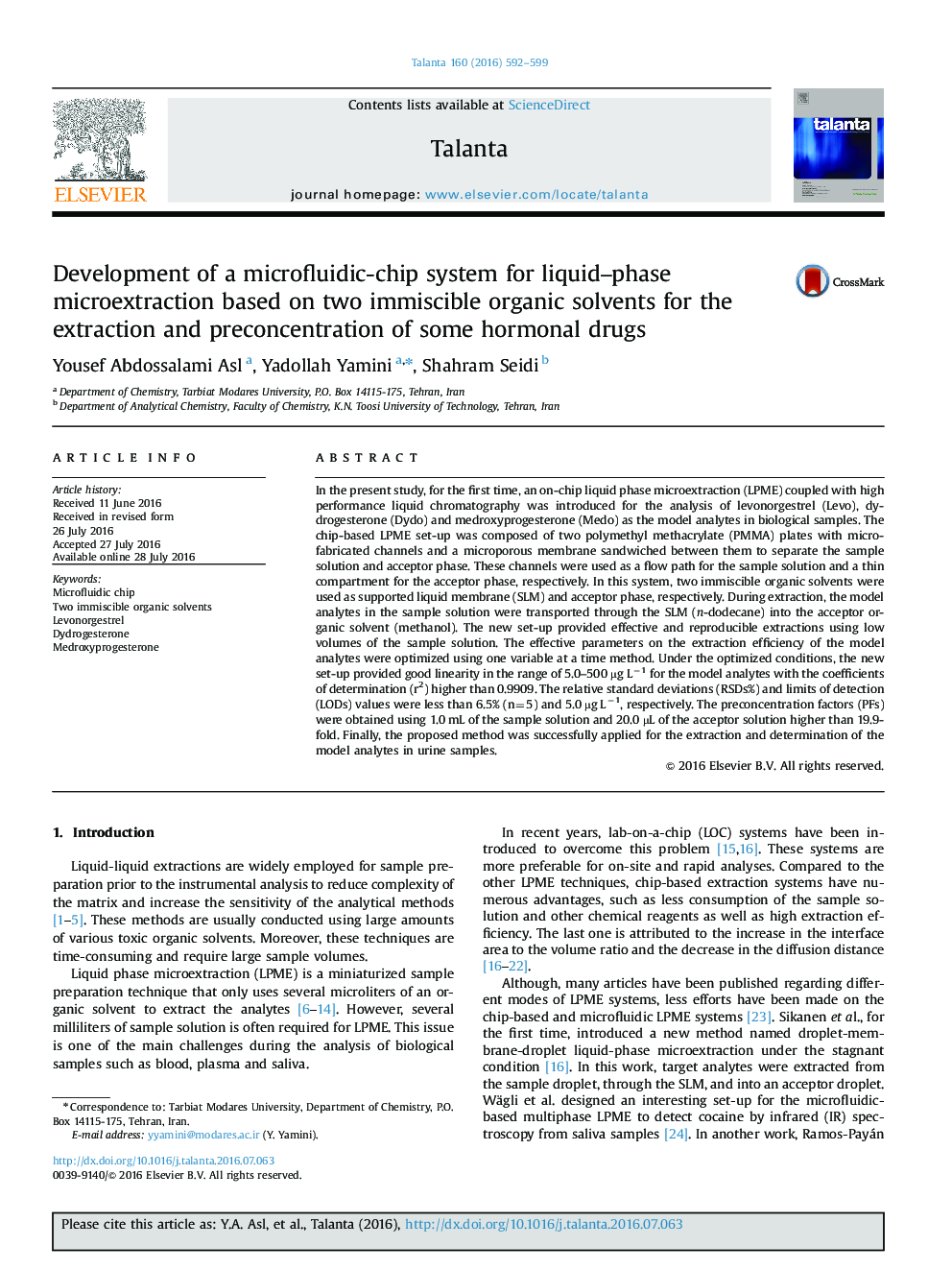| Article ID | Journal | Published Year | Pages | File Type |
|---|---|---|---|---|
| 1243299 | Talanta | 2016 | 8 Pages |
•On-chip liquid phase microextraction coupled with HPLC was introduced.•Two immiscible organic solvents were used as membrane and acceptor phases.•The method was applied for analysis of three progestin hormones in biological samples.•The effective parameters on the extraction of the model analytes were optimized.•The Method provided effective extractions using low volumes of the sample solution.
In the present study, for the first time, an on-chip liquid phase microextraction (LPME) coupled with high performance liquid chromatography was introduced for the analysis of levonorgestrel (Levo), dydrogesterone (Dydo) and medroxyprogesterone (Medo) as the model analytes in biological samples. The chip-based LPME set-up was composed of two polymethyl methacrylate (PMMA) plates with microfabricated channels and a microporous membrane sandwiched between them to separate the sample solution and acceptor phase. These channels were used as a flow path for the sample solution and a thin compartment for the acceptor phase, respectively. In this system, two immiscible organic solvents were used as supported liquid membrane (SLM) and acceptor phase, respectively. During extraction, the model analytes in the sample solution were transported through the SLM (n-dodecane) into the acceptor organic solvent (methanol). The new set-up provided effective and reproducible extractions using low volumes of the sample solution. The effective parameters on the extraction efficiency of the model analytes were optimized using one variable at a time method. Under the optimized conditions, the new set-up provided good linearity in the range of 5.0–500 µg L−1 for the model analytes with the coefficients of determination (r2) higher than 0.9909. The relative standard deviations (RSDs%) and limits of detection (LODs) values were less than 6.5% (n=5) and 5.0 µg L−1, respectively. The preconcentration factors (PFs) were obtained using 1.0 mL of the sample solution and 20.0 µL of the acceptor solution higher than 19.9-fold. Finally, the proposed method was successfully applied for the extraction and determination of the model analytes in urine samples.
Graphical abstractAn on-chip liquid phase microextraction coupled with HPLC-UV was introduced for the analysis of levonorgestrel, dydrogesterone and medroxyprogesterone in biological samples.Figure optionsDownload full-size imageDownload as PowerPoint slide
